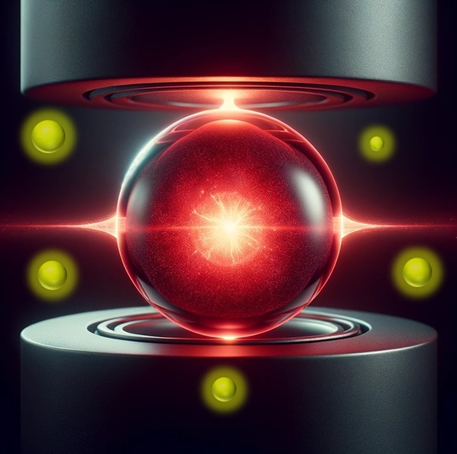Highly-sensitive, tri-modal luminescent manometer utilizing band-shift, ratiometric and lifetime-based sensing parameters
Title: Highly-sensitive, tri-modal luminescent manometer utilizing band-shift, ratiometric and lifetime-based sensing parameters
Authors: M. Szymczak, J. Jaskielewicz, M. Runowski, J. Xue, S, Mahlik, L. Marciniak
Journal: Advanced Functional Materials

Luminescence manometry has been a technique undergoing particularly rapid development in recent years, primarily due to its capability for remote and electrically passive imaging of pressure changes.
Within the framework of the strategy proposed by Prof. Marciniak's group regarding single-band, ratiometric luminescent manometers utilizing the broadband luminescence of Cr3+ ions associated with the 4T2→4A2 electronic transition, the spectroscopic properties of Li3Sc2(PO4)3:Cr3+ with exceptional manometric properties were investigated. As demonstrated by studies conducted by Maja Szymczak, Julia Jaśkielewicz and Łukasz Marciniak, along with collaborators from Poznań and Gdańsk, for the 4T2→4A2 band of Cr3+ ions in Li3Sc2(PO4)3:Cr3+, an increase in pressure up to 3GPa results in the largest spectral shift rate among phosphors described to date, of 23.9 nm/GPa. This enabled the development of a ratiometric manometer with a relative sensitivity exceeding 56%/GPa and high thermal insensitivity (TIMF=1386 K GPa-1). Furthermore, the change in spin-orbital coupling between the 2E and 4T2 levels observed with pressure change causes a monotonic elongation of the decay kinetics of the 4T2 level, allowing for lifetime-based pressure measurement with sensitivity exceeding 93%/GPa. This value is several times higher than the highest relative sensitivities described in the literature. More details on these studies conducted within the framework of the NCN Opus project 2020/37/B/ST5/00164 can be found in the publication in Advanced Functional Materials.
See also
- The Institute
- General information
- Employees
- News
- Scientific News
- Gender equality plan
- Address and contact data
- Research
- Research profile
- List of publications
- List of projects
- International cooperation
- Information in BIP
- Scientific Council
- Organizational structure
- GDPR


